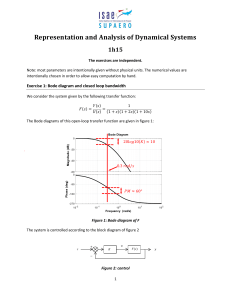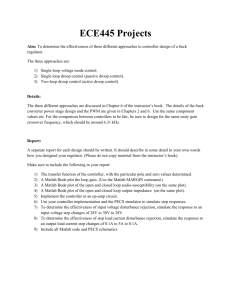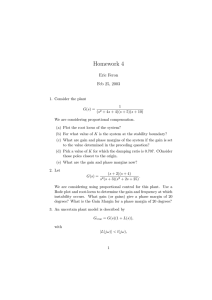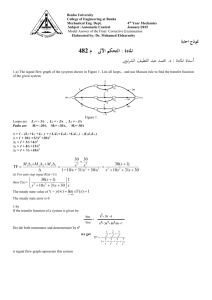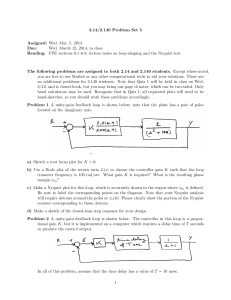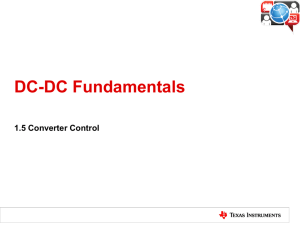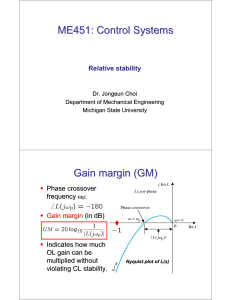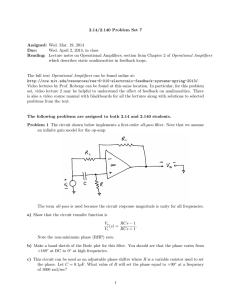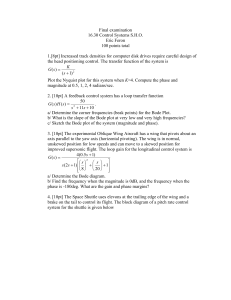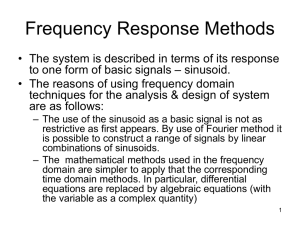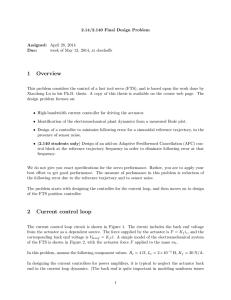Control Systems Exam Paper - B.S. Electronics
advertisement
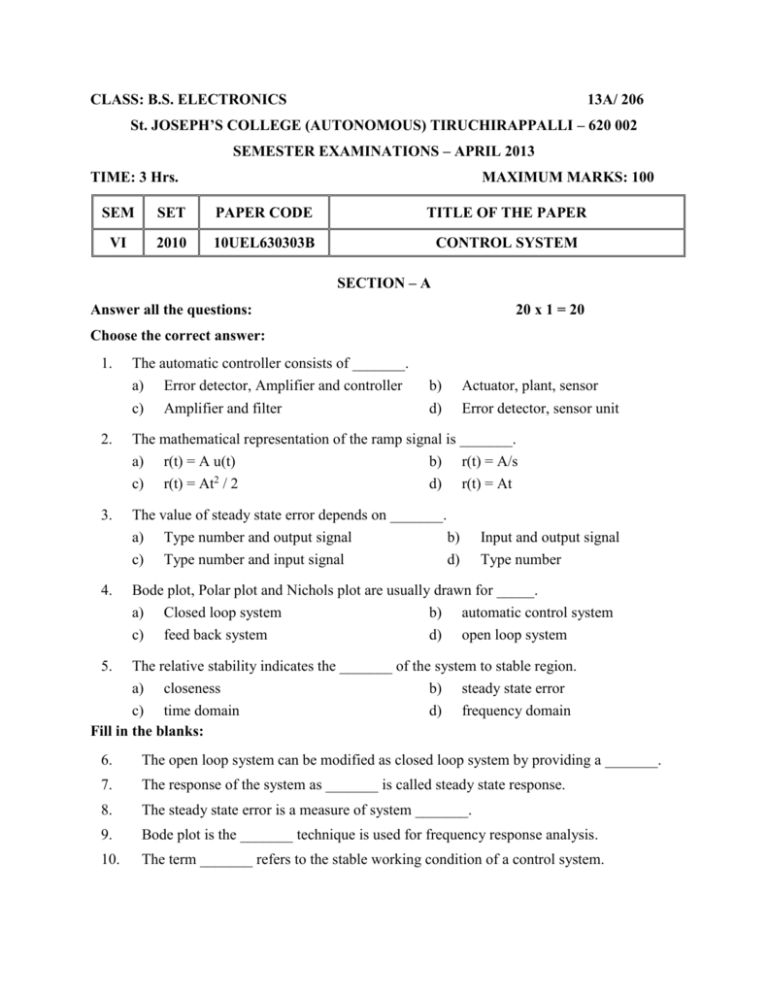
CLASS: B.S. ELECTRONICS 13A/ 206 St. JOSEPH’S COLLEGE (AUTONOMOUS) TIRUCHIRAPPALLI – 620 002 SEMESTER EXAMINATIONS – APRIL 2013 TIME: 3 Hrs. MAXIMUM MARKS: 100 SEM SET PAPER CODE TITLE OF THE PAPER VI 2010 10UEL630303B CONTROL SYSTEM SECTION – A Answer all the questions: 20 x 1 = 20 Choose the correct answer: 1. The automatic controller consists of _______. a) Error detector, Amplifier and controller c) Amplifier and filter b) d) Actuator, plant, sensor Error detector, sensor unit 2. The mathematical representation of the ramp signal is _______. a) r(t) = A u(t) b) r(t) = A/s c) r(t) = At2 / 2 d) r(t) = At 3. The value of steady state error depends on _______. a) Type number and output signal b) c) Type number and input signal d) 4. Input and output signal Type number Bode plot, Polar plot and Nichols plot are usually drawn for _____. a) Closed loop system b) automatic control system c) feed back system d) open loop system 5. The relative stability indicates the _______ of the system to stable region. a) closeness b) steady state error c) time domain d) frequency domain Fill in the blanks: 6. The open loop system can be modified as closed loop system by providing a _______. 7. The response of the system as _______ is called steady state response. 8. The steady state error is a measure of system _______. 9. Bode plot is the _______ technique is used for frequency response analysis. 10. The term _______ refers to the stable working condition of a control system. State True or False: 11. The mason’s gain formula is used to determine the transfer function of the system from the block diagram reduction technique. 12. Test signals are simple function of Time. 13. The proportional controller produces and output signal which is proportional to error signal. 14. The transfer function of complicated systems can be determined by its time response. 15. The denominator polynomial of closed loop transfer function is called characteristic equation of the system. Match the following: 16. Functional block - a) BIBO stability 17. Damping ratio - b) Kp 18. Position error constant - c) 19. Gain margin - d) Summing operation 20. Linear relaxed system - e) Kg SECTION – B Answer all the questions: 21. a. 5 x 4 = 20 Draw and explain the force balance equation for ideal dashpot and ideal spring element. OR 22. b. State the applications of Potentiometers with necessary diagram. a. What is the importance of test signals? State the mathematical expression of step and ramp signal. OR 23. b. What is the order of a system? Explain. a. What is PI controller? Explain the closed loop transfer function of PI controller. OR 24. b. Explain steady state error. a. Define Phase margin and Gain margin. OR 25. b. What is Bode plot? And give the advantages of bode plot. a. State the point that the roots of characteristic equation based on locations. OR b. Using Routh criterion, determine the locations of the roots of the given characteristic equation, s4 + 8s3 + 18s2 + 16s + 5 = 0 and Comment on the stability of the system. SECTION – C Answer any FOUR questions: 26. 4 x 15 = 60 Write the different equations governing the mechanical system shown in figure and determine the transfer function. X1 K1 X B M M11 M2 f(t) K B1 B2 27. Explain the response of first order system for unit step input. 28. Obtain the response of unity feedback system whose open loop transfer function is G(s) = 4/s(s+5). 29. List out the frequency domain specifications. 30. Construct Routh array and determine the stability of the system whose characteristics equation is s6 + 2s5 + 8s4 + 12s3 + 20s2 + 16s + 16 = 0. Also determine the number of roots lying on right half of s-plane, left half of s-plane and on imaginary axis. **************
